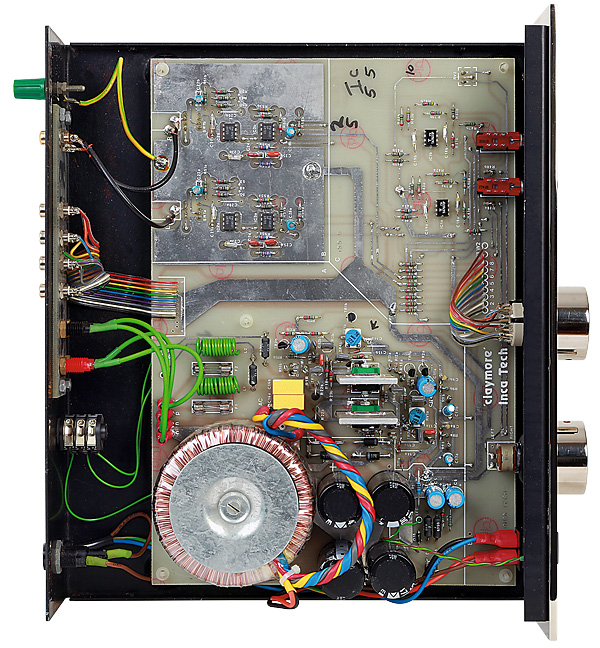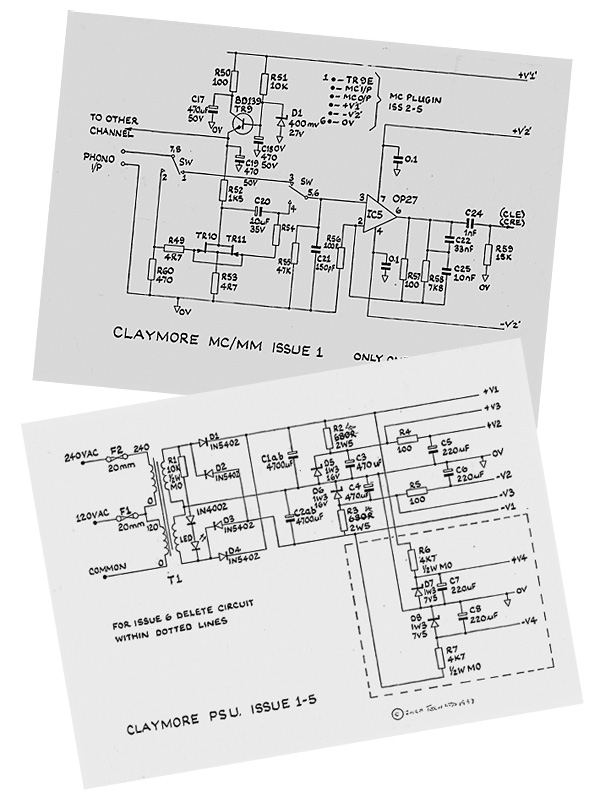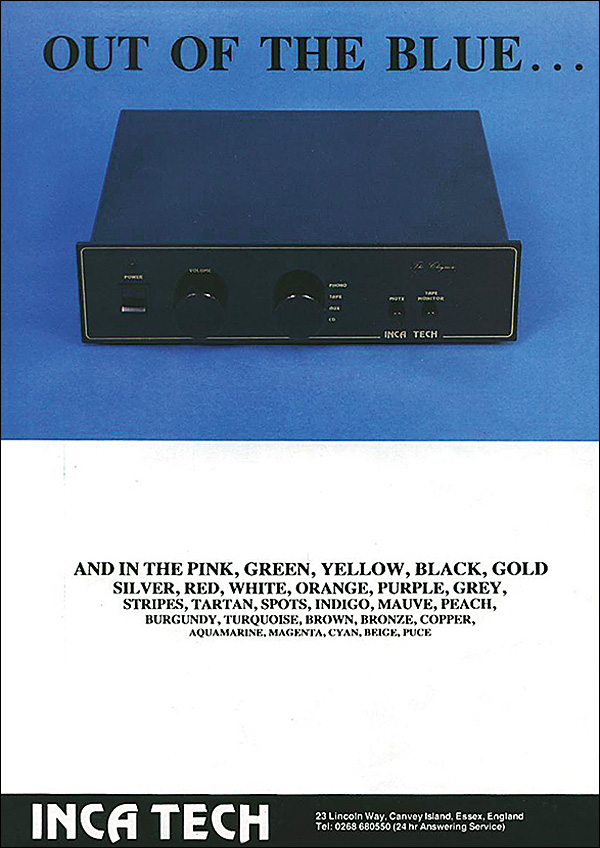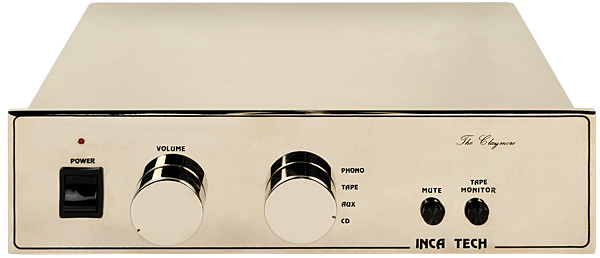Inca Tech Claymore amplifier Page 2
Later versions of the Claymore were more refined, both in terms of sound quality and finish. 'The classic era is generally reckoned to be from the mid '80s, where the power supply was improved and audio-grade capacitors used,' says Colin. Earlier versions had a rougher finish, fewer facilities and an inferior sound – but the differences aren't huge.

By 1989, when the amplifier was discontinued, the Claymore was a great integrated but still had a very 'cottage industry' feel. Many purists of the time loved this, as it was a kind of 'anti-cool' statement in a world of button-infested Sony and Technics amplifiers with fancy brushed aluminium fascias and flashing lights. Looking at it through today's eyes, it has aged less gracefully than some of its more fully rounded rivals.
In a bid to give the Claymore wider appeal, Inca Tech actually launched a companion power amplifier. The Dirk – as in a little, short knife – came out in 1984 to almost complete indifference from the hi-fi press. The idea was to use it for bi-amping. This is super-rare secondhand.
![]() David Listens
David Listens
It's fascinating to warp back in time 35 years to hear this wee little integrated amplifier, yet it sounds surprisingly fresh and modern. In essence, it's a clean, open and decently powerful solid-state design, with a good amount of life and snap to the way it makes music. At the same time it's tonally warmer and sweeter than many designs of today, and while you might say this results in a slightly diffuse and opaque sound when you drill right down to things, it's still a very pleasant listen indeed.
What's most apparent is the Claymore's attitude. It is big hearted and full of emotion. As Scritti Politti's 'The Word Girl' [Cupid And Psyche; Virgin 32VD-1006] showed, it grips the overall musical flow of a song with ease, and never lets go. It's bouncy, fun and satisfyingly energetic, sounding as if it's enjoying the music as much as the listener.

One important element is the bass, which while tuneful and propulsive is a little rotund by today's standards. Also, deep down it's a little light. But in the upper bass region, where most bass guitar work is to be found, there's no shortage of gusto and vim to enjoy. Echo And The Bunnymen's 'The Back Of Love' [from Porcupine; Korova KODE 6] ripped along at a fair old pace, the amp really capturing the energy and emotion.
Focus on the midband and you'll hear a clean and well ordered presentation with a good deal of immediate detail. It captured the scratchy lead guitar work well, and carried vocals with clarity and passion. Yet listen harder and on really well recorded songs, such as Suzanne Vega's 'Cracking' [from Suzanne Vega; A&M Records CDA 5072] and you'll hear a slight fluffiness to the sound, especially towards the back of the soundstage.

It's by no means unpleasant, but a similarly priced – in real terms – integrated of today would have more precision. Soundstaging is a bit vague too. Lead instruments are drawn boldly, but those at the back of the mix seem more vague. However, it's impressively wide on a left-to-right basis – the Suzanne Vega track was engulfing and expansive. Compared, for example, to a Naim NAIT of the same vintage, the Claymore is far superior. Indeed, overall it's highly impressive for its price back in the day – and for what it does now, despite its age.
Buying Secondhand
The Claymore is part of a generation of British amplifiers [writes Tim Jarman] that was based around Hitachi's MOSFET application notes. A rugged output stage combined with simple op-amp-based preamp sections means that reliability is good for this class of product.
Although it is possible to adjust the power amp's bias current during an overhaul, there is no provision made to null any DC error term at the unit's loudspeaker output. As there is no protection relay either, it's wise to ensure that the correct fuses are fitted before using the unit with a pair of valuable speakers.

Low voltage supplies for the preamplifier sections of the Claymore are dropped from the main supply rails by a pair of hot-running resistors near the mains transformer. In time, this heat can dry out the small electrolytic capacitors associated with the circuit nearby. So in the case of excessive hum and noise this is the first place to look.
Hi-Fi News Verdict
The Claymore does a grand job of sounding big, bold and confident. Its shortcomings might well be revealed if asked to manhandle an insensitive floorstander but by the standards of its day, it was a real little powerhouse. Indeed, what is so impressive is how designer Colin Wonfor squeezed a quart out of a pint pot, and sold his creation for such little money. That was its appeal, both then and now.























































